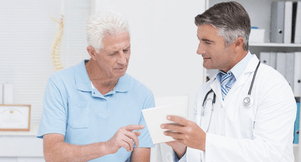
Chronic prostatitis is an inflammatory disease characterized by lesions of the prostate gland and severe urodynamic disorders. One of the causes of chronic inflammation of the prostate is improper or timely treatment, when decamation and proliferation of glandular epithelium can be reversed and successfully corrected with medication within 2-3 weeks.
Treatment of chronic prostatitis includes massive antibiotic therapy aimed at eradicating infectious agents, a set of measures to improve immunity, physiotherapeutic methods, and heat therapy. Psychocorrection can also be included in the therapeutic regimen, as neurasthenic conditions and such neurosis are often observed in men with long-term and recurrent prostatitis.
Why does inflammation become chronic?
Knowing the cause of chronic prostate inflammation is necessary to prevent deterioration and improve the quality of life of patients. There are a large number of factors that can affect the functional state of prostate gland tissue (prostate gland) and cause inflammation, which is based on the decamation and proliferation of epithelial cells.
The leading cause of chronic prostatitis in men is widespread contamination of the mucous membranes of the genitourinary system by pathogenic microorganisms. In most cases of infectious prostatitis (more than 80%), gram-negative and gram-positive bacteria are the causative agents of infection: enterobacteria (in particular, Escherichia coli), gonococci, staphylococci. More rarely, infectious and inflammatory processes continue on the background of infection with viruses, fungi and protozoa, but such forms of prostatitis are successfully treated in the acute period and rarely give a relapse, depending on proper and timely therapy.
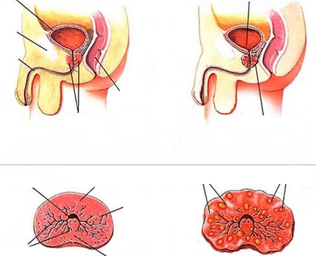
It should also be noted that for the development of chronic aseptic prostatitis, a single acute infection of the urinary tract is sufficient, therefore, personal hygiene, condom use during sexual intercourse and timely treatment of urinary tract diseases are very important in disease preventionThis is for men. Medicine knows the case of hematogenous infection (through systemic circulation) of the prostate in chronic sinusitis, tonsillitis and other diseases that contribute to the active growth of pathogenic flora, therefore, clearing the focus of chronic infection is an important stage in complex treatment for prolonged or prolonged prostate inflammation.
Negative factors that can cause exacerbation of prostatitis (including non-communicable courses) are:
- urinary tract injuries and surgery on organs of the genitourinary system;
- normal or severe pelvic organ hypothermia (swimming in open water during periods when the water is not hot enough or cold weather outside, working in the refrigerator and freezer, etc. );
- hypodynamia is caused by inactivity and inadequate physical activity of men (inactive lifestyle is one of the main factors in the development of chronic cognitive prostatitis);
- bad habits, in which the absorption of the most important micro and micro elements that determine the chemical composition and rheological properties of prostate secretion (zinc, chromium, selenium, manganese) is slowed or disrupted;
- disorders of the intimate space (frequent masturbation, irregular sexual intercourse, prolonged abstinence period, frequent stimuli that do not end with sexual intercourse);
- overweight;
- eating disorders (increased intake of spicy, overly salty, smoked and fatty foods).
Watch out! Urologists state that the main pathogenetic factor in the development of chronic inflammation of the prostate gland is posterior urethritis. It is also noted that inflammatory changes in the prostate in men appear in the first months after gonorrhea.
Treatment of chronic prostatitis with medications
Treatment of chronic prostatitis with medication aims only to suppress the acute symptoms during the exacerbation and destruction of the infection, but the drug should not be used as the only means (the effectiveness of such treatment will not exceed 36%, according to Dr. Pechersky).
A complete treatment regimen for prolonged or recurrent prostate inflammation, used today as a standard for uncomplicated disease, is presented in the table below.
Schedule. Preparations for the complex treatment of chronic prostatitis.
| Pharmacology group | Purpose |
|---|---|
| Antibiotics from the macrolide group, semi-synthetic penicillins and third generation cephalosporins with a broad spectrum of antibacterial activity. | Elimination (destruction) of pathogenic bacteria - agents that cause infectious prostatitis, urethritis, cystitis and other urinary tract infections. |
| Antimicrobial and antiprotozoal agents. | Treatment of infections caused by pathogenic microbes and protozoa. |
| Nonsteroidal anti-inflammatory drugs (preferably in the form of rectal suppositories). | Reduces inflammation in prostate tissue, relieves pain in the perineum, intergluteal space, sacrum and groin. |
| Antiseptic in the form of rectal suppositories. | Rehabilitation of the rectal mucous membrane and prevention of its infection with prolonged prostatitis. |
| Alpha blocker. | Normalization of urination, recovery of daily urine production. |
| Microwave circulation correction. | Elimination of congestion in the small pelvic ducts, recovery of normal blood and lymph flow. |
| Urodynamic correction (an agent that affects metabolism in prostate tissue). | Increased metabolic and metabolic processes in prostate gland tissue and its nutrition. |
| Potential regulator. | Complex treatment of erectile dysfunction, improving chemical composition, viscosity and smoothness of semen, increasing sperm activity (use of drugs in this group is indicated for patients with complicated prostatitis by autoimmune infertility). |
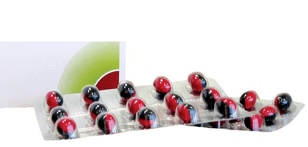
The duration of antibiotic treatment is at least 4-6 weeks. You should not take drugs with antibacterial effect without a doctor's prescription, because the main factor of therapeutic selection is the result of microscopic examination of prostate secretions and spontaneously released fluid as a result of prostate massage. Some antibiotics, for example, penicillin (a combination of amoxicillin with clavulanic acid) are storage drugs, and their misuse can lead to not only the absence of clinical effects and pathological development, but also the development of superinfection.
Important! In some cases, men with chronic prostatitis need psycho correction, especially if the pain syndrome is combined with behavioral changes, increased anxiety, irritability, and neurasthenia. To suppress these symptoms, antidepressants with selective serotonin intake are used.
Physiotherapy
Heat therapy is the main method of treating chronic prostatitis outside the exacerbation period (after the onset of acute symptoms). Heat therapy refers to the method of physiotherapy and is the effect of heat on the affected area. The benefits of thermal procedures are in normalizing blood circulation, relieving the inflammatory process, reducing chronic pelvic pain, which is one of the main clinical manifestations of chronic prostatitis, which reduces the quality of life of men. Heat also increases the penetration of drug substances into the prostate tissue, therefore, in some cases, physiotherapy is used to increase the effectiveness of drug therapy (e. g. , electrophoresis with antibiotics). For men with high blood clotting risk, heating is prescribed for prophylaxis, as heat has a moderate absorption effect.
There are a large number of methods of heat treatment on the body, and the choice of specific treatment methods should be made by the doctor, taking into account the clinical picture, form and stage of the disease, age of the man and individual tolerance. The following therapeutic methods are most effective for prostatitis:
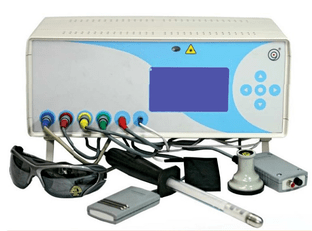
- thermal applications with minerals (ozokerite, paraffin, bischofite), salt or sand;
- electric heating pad;
- deep warming of strong tissue for direct effects on blood vessels and nerve endings (diathermy);
- exposure to high frequency alternating magnetic fields to relieve pain, relieve inflammation and eliminate manifestations such as neurosis (inductothermy);
- ultrasound therapy (promotes abscess reabsorption and healing of scars formed);
- electrophoresis with the introduction of electrodes into the rectum;
- exposure to prostate tissue by high frequency impulse current (darsonvalization)
In some physiotherapy rooms, chronic prostate inflammation is treated with the application of hot mud ("mud pants"). Such a procedure has a positive effect not only on the blood and lymph circulation, but also on the production of prostate secretions, as well as the nutrition of inflamed organ tissue. In some cases, the mud is injected directly into the rectum in the form of a tampon, because with this method of administration it is possible to achieve a therapeutic effect and a positive response to therapy quickly.
Other treatments
Complex treatment schemes, in addition to drug therapy and thermal therapy, are complemented by a variety of procedures prescribed by a physician, taking into account the uniqueness of the pathology in each case.
Prostate massage
This is one of the main methods of treatment of chronic inflammation of the prostate gland, which is recommended for use in almost 90% of cases (if there are no contraindications). Massage is the effect of fingers on the prostate to stimulate the outflow of vein fluid. The duration of the procedure is usually about 1-2 minutes. The criteria for adequate effect is the complete emptying of the prostate gland, which the patient feels as a relief (which he should inform the doctor).
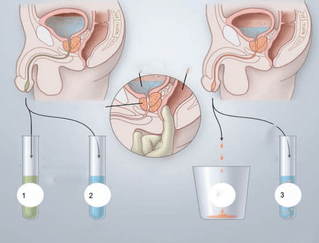
The benefits of massage are determined by the therapeutic effect that can be achieved after undergoing treatment (8-12 procedures). With an uncomplicated course, this is:
- normalizes muscle tone;
- increased blood circulation in the prostate canal (due to this, transport of the drug to the affected organ tissue is accelerated and therapeutic effectiveness is increased);
- secret secret recovery;
- normalization of blood and lymph flow from the prostate gland (especially noticeable in cognitive prostatitis).
This procedure is contraindicated in the acute period because of the high risk of spreading the infection to the surrounding tissues and organs (hematogenous infections), with other infectious diseases of the genitourinary system, the presence of cysts or stones in the prostate. Prostate massage is not prescribed for patients who have been diagnosed with tuberculosis organ damage, adenoma or other neoplastic diseases (including prostate gland cancer lesions). If there is disease in the rectum (hemorrhoids, anal fissures, proctitis, paraproctitis), massage can cause complications and lead to recurrence of the underlying disease.
Important! Studies show that almost 42% of men refuse prostate massage because of the increased psychological discomfort associated with the strangeness of this procedure. The doctor's work with such patients should include detailed information on the consequences of treatment rejection and possible complications, in particular, infertility and persistent sexual dysfunction. In some cases, it may be advisable to give a mild sedative a few days before starting treatment.
Hot enema
Hot enemas are a home-based treatment for chronic prostatitis, but urologists are aware of their effectiveness and recommend them for faster and more effective treatment of prostatitis. The water temperature for this enema should be around 42 ° C. Before the procedure, it is necessary to clean the intestines with an enema or regular laxative. The volume of an enema is from 150 to 300 ml. It is recommended to empty the bowel within an hour 30-50 minutes after administration of the solution.
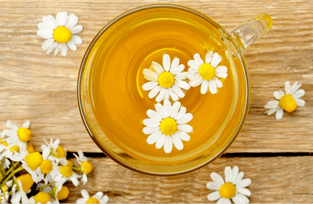
Recipes for chronic prostate inflammation are listed below.
- Dissolve 10 drops of iodine and about 20 ml of chlorhexidine in 200 ml of water. Apply at bedtime for 15 days.
- Boil chamomile, St. John's wortJohn or calendula should be inserted into the rectum (about 250 ml), and then stored for 1 hour. The procedure is repeated once a day for 2 weeks.
- Sea buckthorn oil (40-50 ml) is heated to 40 ° C and inserted into the rectum for 20-30 minutes. The course of treatment is 10-15 days. The procedure is best done before bed.
- If severe pain syndrome, which significantly limits the patient's mobility and worsens his or her quality of life, microclucers with novocaine may be used. Dissolve 2 ampoules of 2% novocaine solution in 180 ml of steep chamomile decoction. Hold for at least 50 minutes. Repeat daily for 1 week.
Anti-inflammatory drugs, antiseptics, antibiotics can also be used from medicines for microclucers. The use of these drugs is allowed with the permission of the doctor according to the prescribed dose.
Treatment of chronic prostatitis: step-by-step instructions
The use of various treatment methods is not enough to completely eliminate chronic prostatitis. If a man does not monitor his diet and does not change his lifestyle, exacerbations will occur periodically, leading to changes in the structure and functional activity of the prostate gland and persistent urination and sexual disorders. In order for the effectiveness of the treatment and the duration of remission to be higher, you should adhere to the recommendations set out in the instructions below for patients with chronic prostatitis.

- Step 1. If a man is diagnosed with chronic prostatitis, he should start by correcting his diet. You need to exclude foods from the menu with large amounts of fat, salt and spices. Fats increase blood cholesterol levels, and salts increase fluid retention and edema in prostate tissue. Spices (like various chemical additives) irritate the mucous membranes of the urinary tract, causing symptoms to occur.
- Step 2. It is also necessary to get rid of alcoholic beverages completely, as these drinks slow down the absorption of nutrients, disrupt blood and lymph circulation, and negatively affect metabolism in the prostate. If a man suffers from tobacco addiction, steps should be taken to eliminate this habit (toxic substances in tobacco smoke violate the viscosity and smoothness of prostate secretion and alter its chemical composition).
- Step 3. Overweight men should consult an endocrinologist and nutritionist for a comprehensive diagnosis and correction of weight, taking into account the abnormalities that have been identified. Obesity is the most important factor in the development of chronic prostatitis, and an important stage in complex therapy is weight loss in patients with high BMI.
- Step 4. To eliminate stagnant phenomena associated with hypodynamic disorders, it is necessary to provide an adequate level of physical activity, appropriate to age and physical fitness. Swimming, physiotherapy exercises, stretching exercises, walking are useful for prostatitis.
- Step 5. For normal prostate function, it is necessary to monitor the quality of sexual life. It is recommended to have a regular sexual partner, to avoid episodes of sexual arousal if there is no possibility of further sexual intercourse, and to be periodically checked for genital infections, which can also trigger an increase in chronic prostatitis.
Men with recurrent prostatitis need to monitor emotional stress, avoid stressful situations, as well as prolonged exposure to colds or strong winds.
Chronic prostatitis is a disease that is difficult to treat, especially if the patient does not follow the prescription of the attending physician and does not take a responsible approach to nutritional problems and regimens. Prostate inflammation is dangerous with serious complications, so you need to approach the problem comprehensively. Men with this diagnosis should understand that the pill alone is not enough to fully restore the function of the prostate gland, so you should not abandon the basic therapeutic methods for chronic prostatitis recommended by your doctor, even if it causes major psychological or physical discomfort.































